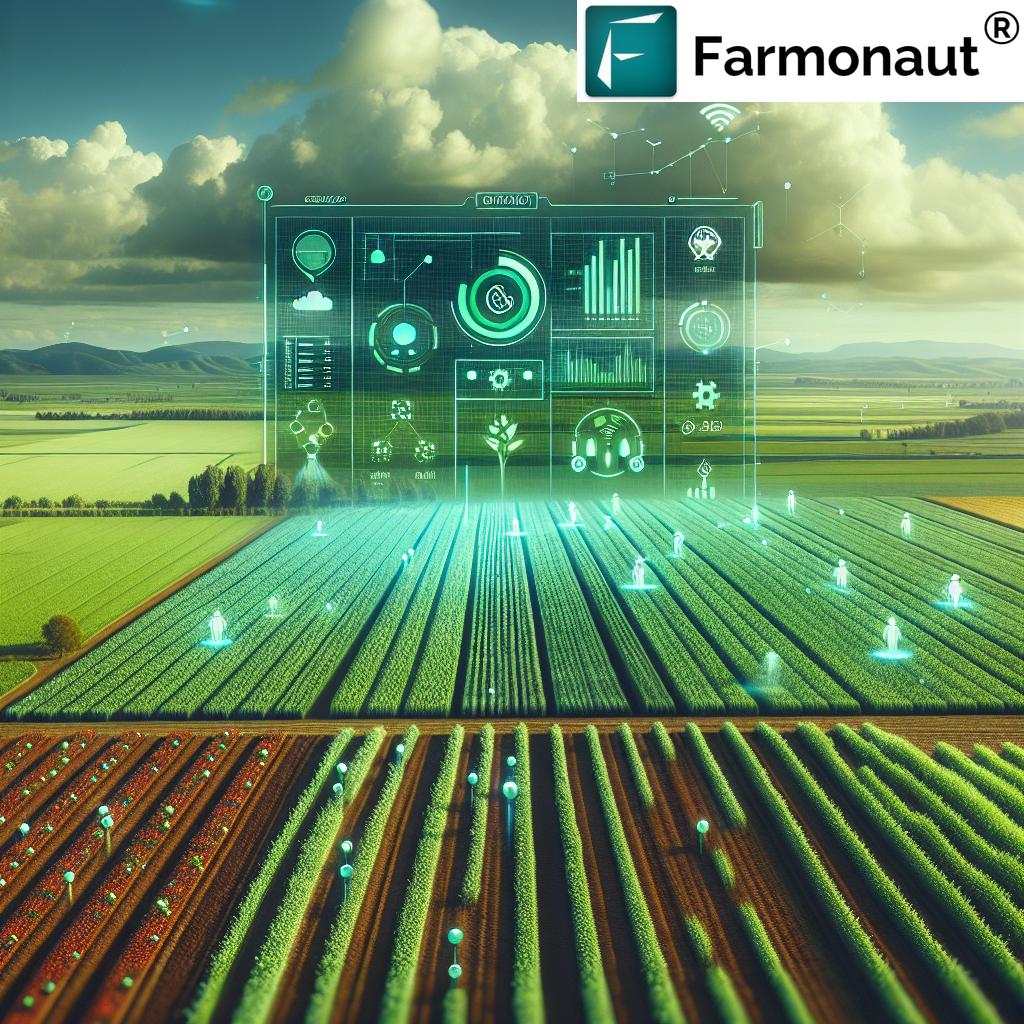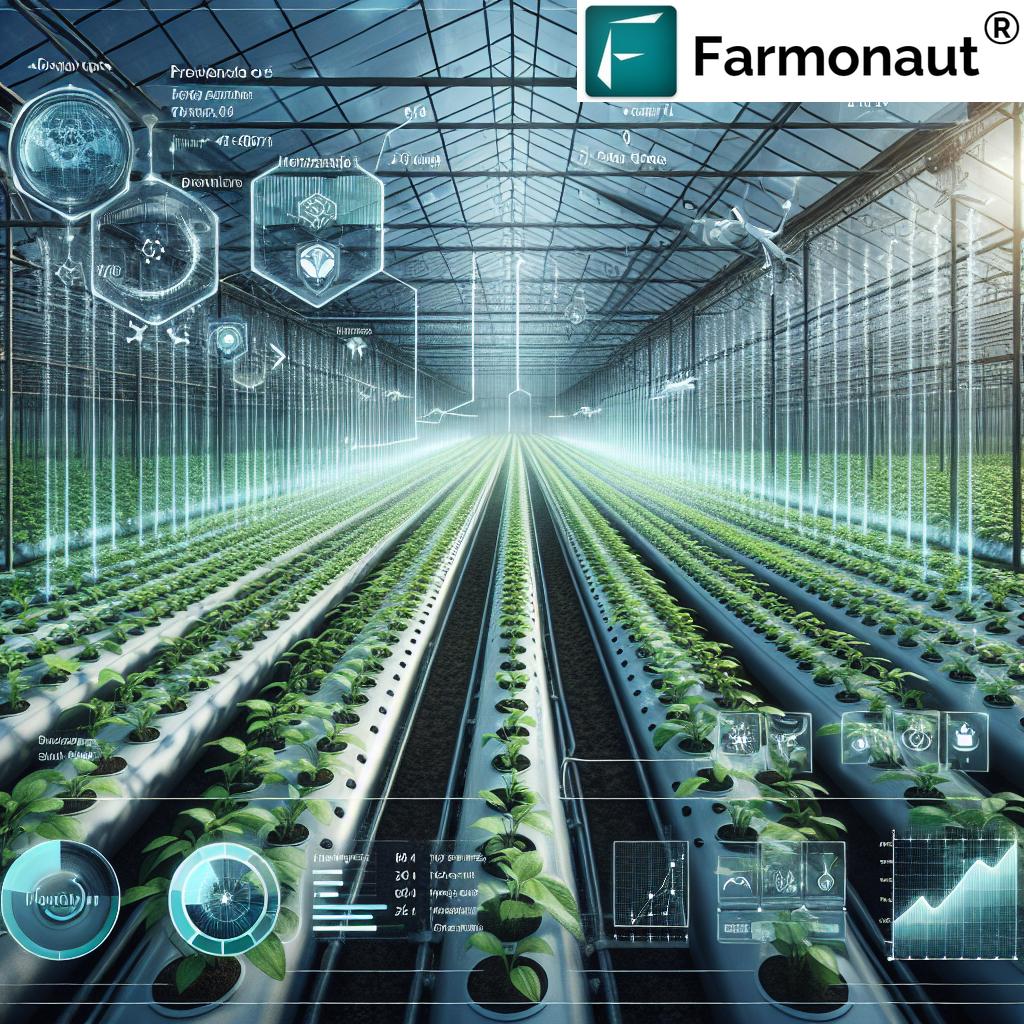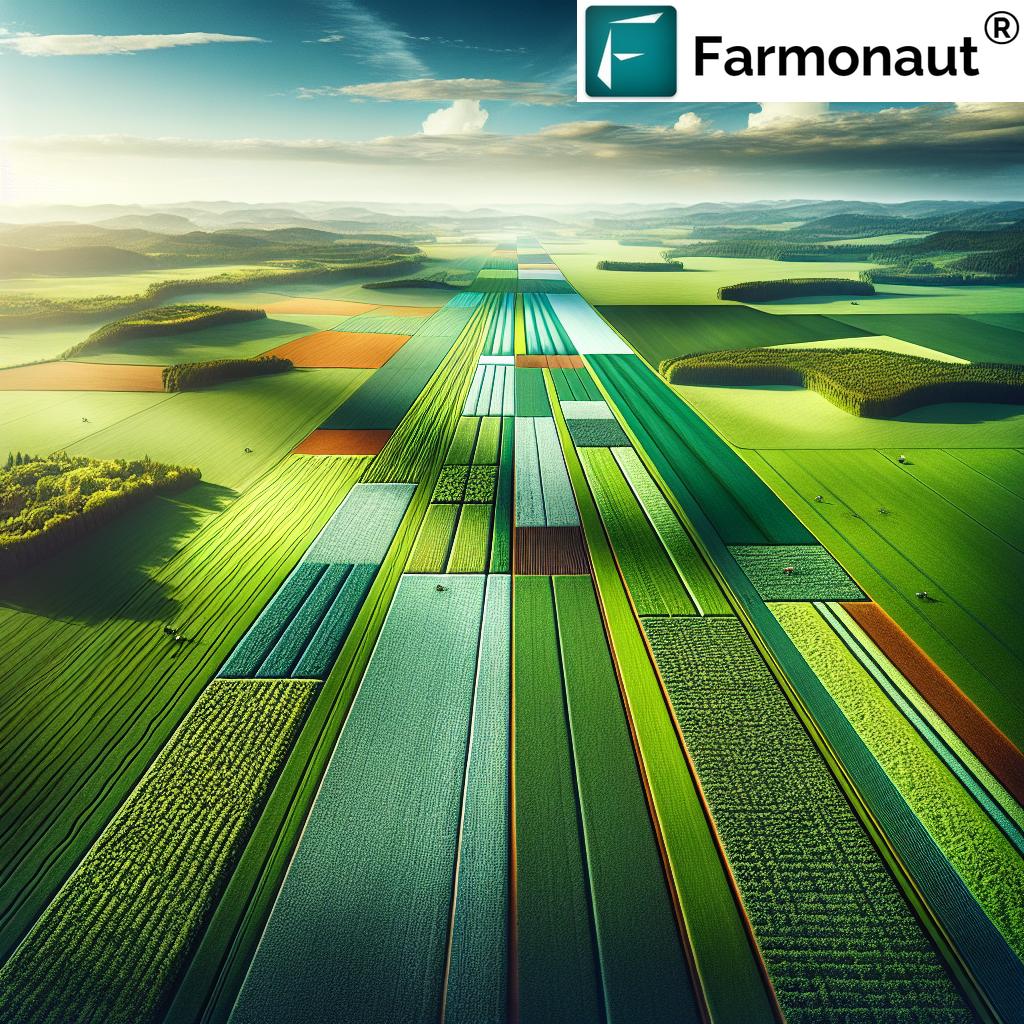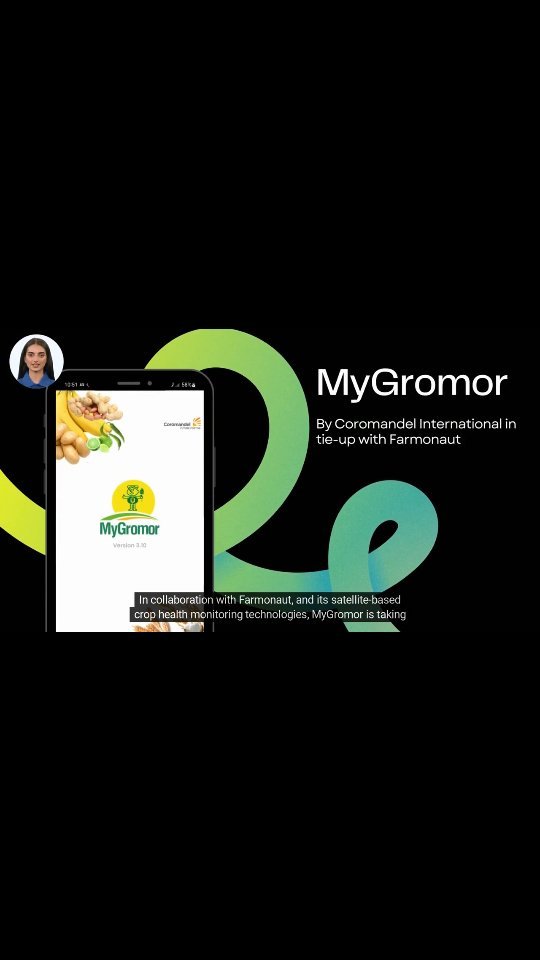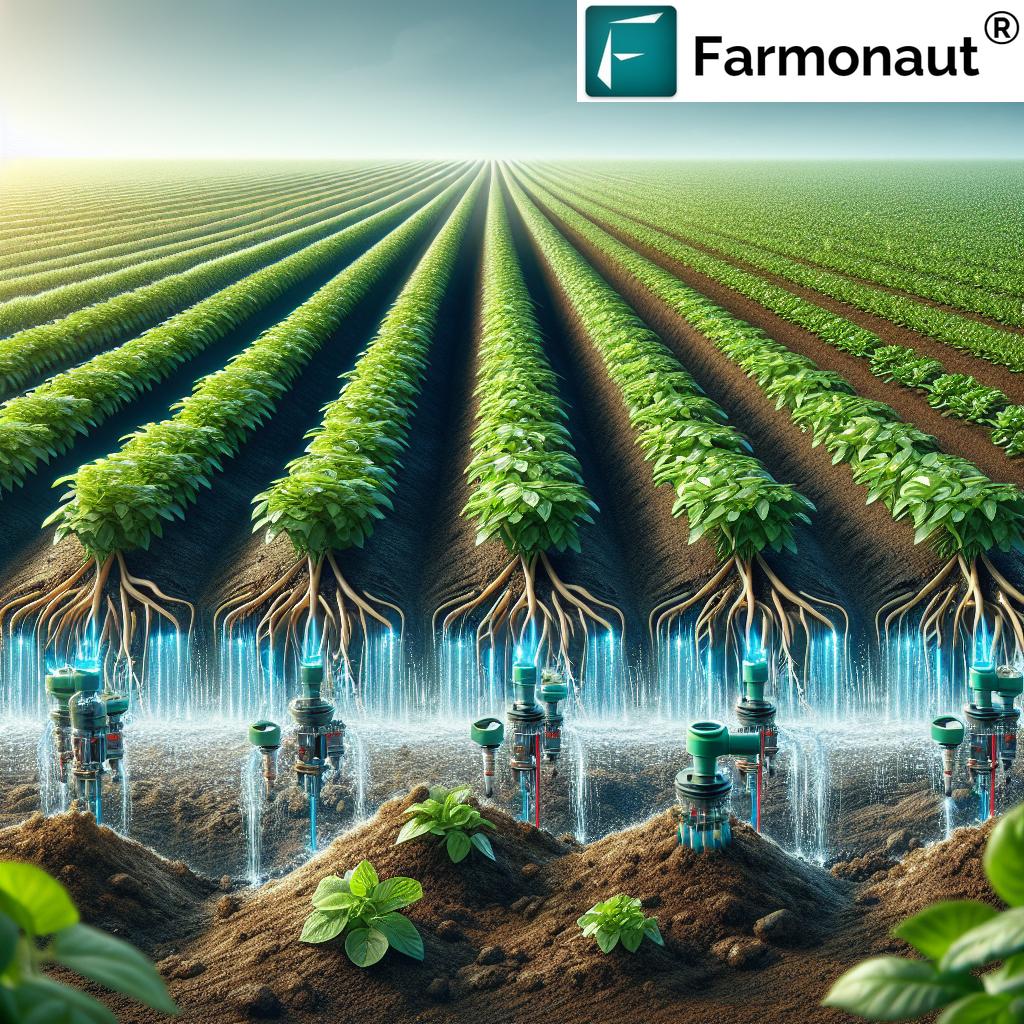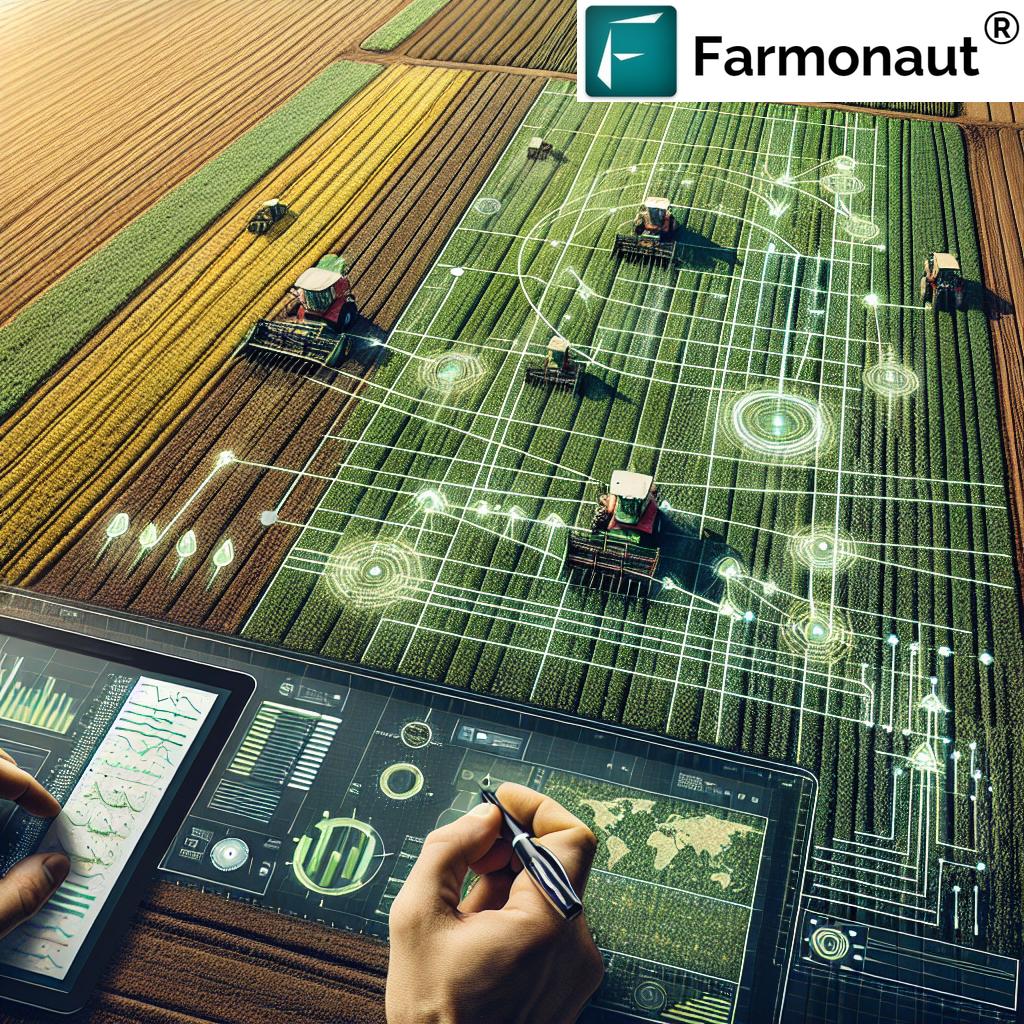Agriculture and IoT: Unlock 7 Game-Changers Now!
“Over 75 million IoT devices are projected to be used in agriculture worldwide by 2025.”
Introduction: How IoT is Cultivating a New Era in Agriculture
The integration of the Internet of Things (IoT) into agriculture is revolutionizing how we grow, manage, and deliver food—from field to fork. As smart farming technologies, precision farming solutions, and agricultural IoT devices become widely accessible, we’re ushering in a transformative era that enhances productivity, sustainability, and resource optimization for farmers and agribusinesses worldwide.
Today’s agricultural practices are being reshaped by real-time data, automated monitoring, and intelligent management systems that leverage sensors, wireless connectivity, and advanced analytics. By embedding these technologies in our fields, barns, and supply chains, we’re not just improving efficiency for farmers—we’re ensuring food security, reducing environmental impact, and guaranteeing better crop quality for the rapidly growing global population.
In this comprehensive guide—Agriculture and IoT: Unlock 7 Game-Changers Now!—we’ll explore the core benefits, practical applications, and future prospects of IoT in agriculture. We’ll also highlight how Farmonaut’s innovative platform brings affordable, scalable, and highly effective data-driven agriculture solutions to fields everywhere.
Key Benefits of IoT in Agriculture
As digital transformation sweeps through the agriculture sector, we are witnessing remarkable progress across efficiency, sustainability, and productivity. Some of the top benefits of IoT in agriculture include:
- Increased Efficiency: Automated systems streamline everything from irrigation to crop monitoring, greatly reducing manual labor, cost, and waste.
- Data-Driven Decision Making: With real-time data from IoT devices and sensors, farmers and agribusinesses can make smart, proactive choices based on actual field conditions and environmental factors.
- Sustainable Farming Practices: We can now precisely manage water, fertilizers, and pesticides, which minimizes environmental impact and promotes responsible, resilient agriculture.
- Improved Crop Quality: By closely tracking soil moisture, crop health, and other vital metrics, quick interventions are possible—leading to superior, market-ready produce.
- Cost Savings: Whether it’s through reduced water usage or more targeted application of nutrients, IoT-driven automation delivers bottom-line savings.
- Resource Optimization: IoT enables us to optimize every resource—land, water, inputs, energy, fleet, and time—for the best possible output with the least input.
- Supply Chain Transparency: Integration of IoT and blockchain provides full traceability from farm to consumer—discover Farmonaut’s traceability solution for enhanced food authentication and trust.
These innovations collectively power a smarter, more resilient global food ecosystem.
Farmonaut: Empowering Data-Driven, Sustainable Agriculture with IoT
At Farmonaut, we are committed to making precision agriculture accessible and affordable for farmers everywhere. By harnessing the power of satellite-based sensing, AI analytics, and advanced farm management tools, our mission is to bring intelligent automation and data-driven insights to traditional farming.
- Satellite-Based Crop Health Monitoring: Our platform delivers real-time NDVI vegetation health maps, soil moisture levels, and environmental data—enabling actionable decisions around irrigation, fertilizer application, and pest detection.
- AI Advisory with Jeevn: A cutting-edge AI system that synthesizes satellite data and weather patterns to provide personalized, timely recommendations on farm management and crop optimization.
- Blockchain Traceability: We guarantee product authenticity and transparency in food supply chains using secure blockchain-led tracking.
- Resource & Fleet Management: Our tools streamline everything from field operations to transportation logistics—see details at Farmonaut Fleet Management.
- Carbon Footprinting & Sustainability: Track real-time carbon emissions with our Carbon Footprinting tools for climate-friendly, sustainable farming practices.
- Crop Loan & Insurance Verification: We simplify and secure farm loan/insurance eligibility using satellite-verified data for lenders.
- Multi-Platform & API Access: Use our Android app, iOS app, web dashboard, or plug into our Farmonaut API and developer docs for seamless integration into any digital agricultural system.
Farmonaut’s platform is designed for everyone involved in the agricultural ecosystem: smallholder farmers, agribusinesses, government agencies, corporate food players, and financial institutions alike.
7 Game-Changing Applications of IoT in Agriculture
Let’s dive into the seven most transformative uses of IoT in agriculture that are accelerating the shift to smart, sustainable farming:
-
1. Precision Farming Solutions & Real-Time Crop Monitoring
With sensors embedded in fields, we obtain granular insights into soil conditions, moisture, temperature, and nutrient levels. Precision agriculture enables tailored intervention—applying water, fertilizers, or pesticides only where and when needed—minimizing waste while maximizing yield and reducing environmental stress.
- Real-time crop status & risk alerts through Farmonaut’s satellite-powered platform
- Minimized use of inputs and enhanced resource use efficiency
- Improved crop quality and consistent output
Our solutions empower large-scale farm management as well as the needs of individual growers.
-
2. Livestock Monitoring & Animal Tracking
By attaching smart collars, tags, and biosensors to cattle and other livestock, we’re able to monitor animal health, detect diseases early, and track movement patterns for optimal feeding, welfare, and production.
- Farmers get alerts about unusual animal behavior or health abnormalities
- Automated record-keeping for regulatory compliance and genetics tracking
- Boosted livestock productivity and lower mortality rates
-
3. Smart Irrigation Systems and Water Management
Traditional irrigation can be inefficient and wasteful. With smart irrigation systems, sensors continually track soil moisture and weather forecasts to ensure crops receive the right amount of water—neither too much nor too little.
- Automated irrigation scheduling based on real-time data
- Drastically conserves water and energy, improves crop yields, and reduces operational costs
-
4. Climate Condition & Environmental Monitoring
By placing smart sensors in our fields, we gain constant feedback on climate conditions, atmospheric humidity, temperature, and seasonal weather patterns. When abnormal or hazardous conditions are detected, actionable alerts are instantly delivered.
- Supports climate-resilient farming practices
- Assists farmers in timely crop planning and natural disaster preparedness
-
5. Agricultural Supply Chain Optimization with IoT
From harvest storage to packing, transport, and delivery, IoT-enabled tracking is boosting transparency and responsiveness throughout the agricultural supply chain.
- Prevent spoilage and reduce post-harvest losses
- Real-time location and environmental data monitoring for produce
- Greater transparency with blockchain-backed traceability
See how Farmonaut’s product traceability platform ensures provenance and authenticity from farm to table.
-
6. Farm Automation and Robotics
Integrating drones, autonomous tractors, and automated equipment with IoT networks, we’re now able to automate demanding or repetitive tasks—such as planting, spraying, and harvesting.
- Reduces labor requirements and human error
- Ensures tasks are completed with precision and consistency
- Optimizes usage of machines and improves fleet management
-
7. Data-Driven Advisory Services and AI
Leveraging AI and big data analytics, we can analyze patterns across seasons and locations, offering proactive guidance to farmers about pest risks, irrigation needs, and yield forecasts.
- Personalized, field-specific recommendations (e.g. via Farmonaut’s Jeevn AI advisory system)
- Optimizes resource usage while enhancing productivity and crop quality
- Improves overall farm profitability and resilience to market or climate changes
“Precision farming can reduce water usage by up to 30% through smart irrigation systems.”
Comparison Table of 7 Key IoT Applications in Agriculture
| IoT Application | Description | Estimated Efficiency Improvement (%) | Estimated Cost Savings (%) | Impact on Crop Quality |
|---|---|---|---|---|
| Precision Farming & Real-Time Crop Monitoring | In-field sensors and data analytics optimize input use, while remote satellite tools like Farmonaut’s dashboard deliver actionable crop health alerts. | 20-40% | 15-35% | Significantly improved |
| Livestock Monitoring & Animal Tracking | Wearable devices track health, movement, and feeding; enables early disease detection and data-driven herd management. | 10-25% | 10-20% | Improved |
| Smart Irrigation Systems | Soil moisture, rain, and weather sensors automate irrigation, improving water use and lowering waste. | 15-30% | 20-35% | Improved |
| Climate Condition & Environmental Monitoring | Sensors and weather stations collect real-time atmospheric data, aiding in crop planning and risk prevention. | 10-20% | 8-15% | Unchanged/Improved |
| Supply Chain Optimization with IoT | Tracking and sensor tech ensure quality from farm to consumer, minimizing spoilage and enhancing traceability. | 5-15% | 10-25% | Improved |
| Farm Automation (Drones & Robotics) | Automated vehicles/drones reduce manual labor, improve accuracy in spraying/harvesting, and support smart fleet management. | 35-45% | 25-40% | Improved |
| AI Advisory Systems & Data Analytics | AI analyzes multisource farm data to deliver predictive, personalized advice for sustainable resource use. | Up to 30% | 10-30% | Significantly improved |
How IoT Devices & Automation Drive Transformative Change
Embedding IoT devices and sensors across our fields, greenhouses, livestock enclosures, and machinery is at the heart of the agricultural revolution. But how exactly does this integration deliver practical benefits?
- Soil Sensors: Continuously measure moisture, nutrient concentration, and temperature levels. Automated alerts help us irrigate just as needed, and spot nutrient deficiencies early.
- Weather Stations: Cloud-connected stations at the farm provide hyper-local weather forecasts and environmental conditions—resulting in more precise planting, harvesting, and risk management.
- Smart Irrigation Controllers: Leverage predictive analytics and weather data to operate water valves and pumps with exact timing and flow rates.
- Automation & Robotics: Drones, field robots, and automated vehicles transport, plant, spray, and harvest—enabling efficient operations with less manual oversight and more data for optimization.
- Animal Tracking Tags: Attach IoT collars/tags to monitor health, movement, feeding, and reproduction cycles.
- Blockchain Traceability: Our traceability platform ensures every step from seed to supermarket is transparent and auditable.
Each of these innovations is enabling agricultural resource optimization, ensuring food safety, and making sustainable farming practices possible at scale.
Main Challenges & Concerns in IoT Implementation
For all its advantages, IoT in agriculture still poses adoption hurdles that we need to thoughtfully address for widespread, effective use:
- High Initial Investment: Many IoT solutions require upfront costs for sensors, devices, automated systems, and connectivity infrastructure. While costs are reducing, affordable platforms and scalable packages like Farmonaut’s are crucial for democratizing access to digital tools.
- Connectivity Issues: Reliable, high-speed internet connectivity is not always available in rural or remote contexts, limiting real-time data transmission and automation. Locally cached IoT systems and partnership with telecom operators can help.
- Data Security & Privacy Concerns: With critical farm and yield information being generated, ensuring data security and privacy is paramount. This includes robust encryption, user-control, and blockchain-backed systems for traceability and authentication.
- Integration with Existing Systems: Aligning new IoT tools with traditional practices and legacy farm equipment sometimes demands technical adaptation or upgrades.
- Technical Expertise: Farmers and farm managers need training on operating and maintaining new devices/systems—scalable knowledge-transfer programs are vital.
By factoring in these challenges from the planning stage and choosing user-friendly, modular solutions, we can accelerate IoT adoption in agriculture.
Farmonaut: Precision Agriculture & Smart Integration
We’re committed to lowering technology barriers by offering affordable subscription models—from individual grower plans to enterprise-scale agribusiness and government modules. Farmonaut enables:
- Comprehensive satellite and sensor integration—no expensive hardware needed on fields
- AI-driven analytics and field-specific advisory with our Jeevn system
- End-to-end digital farm management solutions for every type of agribusiness
- Seamless user experience across web, mobile apps, and easy-to-plug APIs
Our platform scales for small family farms, plantation estates, corporate food brands, and government agencies—all with reliable global coverage, real-time insights, and a mission to deliver sustainable food production for generations to come.
The Future: Next Generation Agricultural IoT Technologies
What lies ahead for IoT in agriculture? As we look into the future, we anticipate deeper integration of IoT with sophisticated analytics, sustainability monitoring, and full supply chain transparency.
- Artificial Intelligence (AI): Next-generation AI/ML systems will interpret pattern-rich agricultural data to automate predictive decisions—delivering on the promise of autonomous, self-optimizing farms.
- Blockchain: Precision tracking for every touchpoint in the agricultural supply chain will be enabled—learn how Farmonaut’s traceability platform is paving the way for secure, fraud-free, and transparent food distribution.
- Drones & Robotics: Routine field monitoring, precise chemical application, automated harvesting, and even weed/pest detection will rely on swarms of drones and distributed robotics all guided by real-time sensor data.
- Climate-Resilient Farming: From AI-based weather prediction to real-time carbon footprinting and biodiversity analytics, technology will be critical in adapting to climate change and ensuring food security.
- Sustainability & Carbon Accounting: By integrating farm-level CO2 data with Farmonaut’s carbon tracking platform, agri companies can verify and showcase their sustainability progress to global markets.
- Advanced API Ecosystems: Farmonaut’s satellite and weather APIs and developer documentation help organizations leverage these capabilities in custom-built solutions.
Our commitment: To stay at the forefront of agricultural technology innovation for the betterment of the global farming community.
Frequently Asked Questions (FAQ) on Agriculture and IoT
IoT in agriculture refers to the use of connected > sensors, devices, and automation tools to monitor environmental, soil, climate, and crop factors in real time. The result is smarter, more efficient farming practices—from resource optimization and instant risk alerts to higher crop quality and sustainable outcomes.
Q2: How do smart irrigation systems work?
Smart irrigation systems utilize soil moisture, weather, and temperature sensors to deliver water only when and where it’s needed. This precision farming solution reduces water waste, improves yields, and cuts energy usage, supporting climate-friendly agriculture.
Q3: Is Farmonaut’s platform suitable for smallholder farms?
Absolutely. One of Farmonaut’s driving missions is to make advanced farm automation and sensors accessible and cost-effective even for small-scale and individual growers. Our modular design and affordable plans serve everyone—from the smallest plots to multi-national agribusiness.
Q4: How does IoT technology address data privacy and security in agriculture?
With robust encryption, user-controlled permissions, and—where required—blockchain-backed traceability, the latest IoT devices and platforms (including Farmonaut’s) are designed to safeguard farm and supply chain data from unauthorized access or cyber threats.
Q5: What are the environmental benefits of adopting IoT in farming?
IoT-driven practices dramatically cut water and chemical usage, encourage biodiversity, minimize soil erosion, and enable carbon tracking for reduced emissions—all essential pillars of sustainable agriculture.
Q6: How can I access Farmonaut’s satellite and weather data?
Our data and advisory services are available via web, Android/iOS apps, and developer-integrated APIs. Get started instantly—no special hardware required on your farm!
Q7: How do I get support if I run into technical issues?
We offer detailed documentation, onboarding support, and ongoing customer service to ensure seamless operation of our platform and all associated systems.
Conclusion: Cultivating a Smarter Agricultural World with IoT
The integration of IoT in agriculture is no longer a futuristic dream—it’s reality, shaping the future of global farming, forestry, and food security. With constant advances in data analytics, automation, and intelligent systems, we are building a world where every farmer can access powerful insights, optimize resources sustainably, and thrive in an increasingly challenging environment.
From real-time crop monitoring to blockchain-based product traceability, the innovations detailed here—including those pioneered by Farmonaut—are transforming operations, minimizing costs and waste, and helping deliver safer, higher-quality food at scale.
As we move forward, let’s embrace the full potential of smart farming technologies, precision farming solutions, and agricultural IoT devices—not just for higher profitability, but for resilient ecosystems, climate adaptation, and a more just and sustainable global food system.




